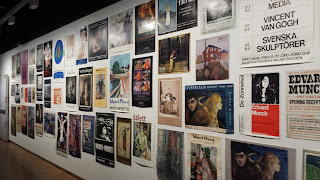 Another bus tour was our first guided excursion to the Hermitage Museum in St. Petersburg. This is a massive (2nd largest in the world) and historic museum. The main building was known as the Winter Palace and was decorated very opulently by the Empress Catherine the Great. Our guide was able to point out to us the 'most important' pieces since we were only given a few hours to explore the entire space.
Another bus tour was our first guided excursion to the Hermitage Museum in St. Petersburg. This is a massive (2nd largest in the world) and historic museum. The main building was known as the Winter Palace and was decorated very opulently by the Empress Catherine the Great. Our guide was able to point out to us the 'most important' pieces since we were only given a few hours to explore the entire space.

Throughout the rooms of the Winter Palace were plenty of opulent ceilings the designs of which were reflected in the intricate patterns of the wood floors. Often there were mosaic tile patterns on the floors.

One tabletop, in particular, caught my eye as it emulated the 'Pollock Polygons' hexagon project I did this year with my 5th-graders.

Another must-see is the Church of the Savior on Spilled Blood. We were early to our second excursion to see the ballet, so we were able to stroll through a souvenir market on the way to capture a photo of this opulent church. Like many of the buildings we saw it too was under renovation.


Inside the Mariinsky Theatre, we watched the two-act ballet, Giselle. Our guide led us to believe that we were going to be seeing Swan Lake. His joke didn't resonate with some of his English-speaking passengers.
The most impressive decoration was over the stage and on the ceiling.
My photos certainly don't do the artwork justice, though I think I captured the chandelier pretty well.



We saw the city lit up at night, then went on another boat tour the 2nd day. The bridges were also well-decorated.











































